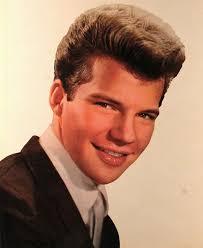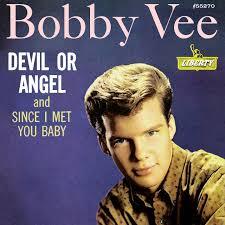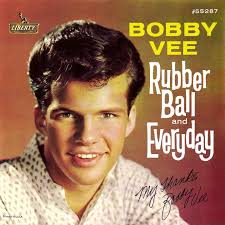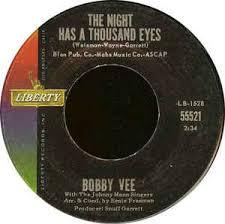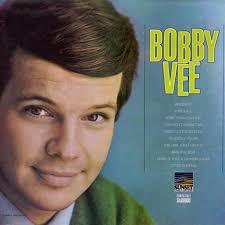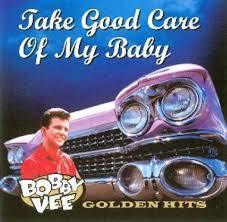Bobby Vee got blasted into rock 'n' roll under the worst circumstances imaginable. He and his new band filled in for Buddy Holly on Feb. 4, 1959, the night after Holly, Ritchie Valens and the Big Bopper died in a plane crash.
"The show should have been cancelled," Vee admitted in a 1999 interview. "People coming in had just heard about the crash. It was like a wake. But since the promoters decided it would go on, they needed local talent to fill out the bill. All we wanted to do was find a way to get through it. Doing that show turned out to be one of my greatest lessons."
It was a lesson learned well. Vee, who died Monday at the age of 73 in hospice outside Minneapolis from complications of early-onset Alzheimer's, soon became a full-blown top-40 star.
More impressive, though less noted, he became a lifelong musician, playing his pop hits, some of Holly's songs, some '50s faves, a bunch of rockabilly - he's in the Rockabilly Hall of Fame - and great little curveballs like an a capella rendition of the Del Vikings's "Come Go With Me."
"Whenever I feel like I'm repeating myself, I know it's time to change," said Vee, who was born in Fargo to a musical family. "I'm blessed that I've been able to stay in music. My three sons have played in my band."
Vee was 15 when he and his band rode across the border to Moorhead, Minn., to play that tragedy-haunted fill-in gig. He said he didn't see it as a step to anything.
"I wasn't thinking in terms of a career," he said. "What I really wanted to do that night was be in the audience and see Buddy. I was a fan."
But 1959 happened to be a golden year for independent music producers, because with the right singer, the right song and a few hundred bucks, anyone could score a hit.
It was an especially good time if you were a good-looking young kid who could make teenage girls swoon, which helps account for the likes of Fabian, Frankie Avalon, Bobby Rydell and Bobby Vee.
Vee recorded "Suzie Baby," which had a strong Holly influence, for Soma Records in Minneapolis. It did well enough to get Vee a deal with Liberty Records, where he teamed up with producer Snuff Garrett to record "Devil or Angel," a ballad that had been an R&B hit for the Clovers a few years earlier.
"I had never heard the Clovers' version," said Vee. "Snuff knew it."
When it became a hit, it opened the door for Vee and Garrett to start auditioning songs from the Brill Building, and over the next couple of years Vee had hits with the likes of "Rubber Ball," "Run to Him," "Sharing You," "The Night Has a Thousand Eyes" and "Take Good Care of My Baby," which spent three weeks at No. 1.
"There was no way you could learn how to have a music career," said Vee. "You couldn't take a course. You just went move by move, and I was a little luckier than some other guys. 1959 to 1965 was a great ride for me."
Some critics would say it was not as wonderful for the music, that the years between Holly's death and the arrival of the Beatles in 1964 were a lost weekend for rock 'n' roll.
They were not correct, and Vee pinpointed why.
"Look at all the great songs and artists then," he said. "The only difference is that there weren't one or two big stars like Elvis or the Beatles or Michael Jackson setting the rhythm and tempo for everyone else."
Vee didn't have to say that he was sometimes dismissed by critics as another pretty-boy teen idol, not a real rock 'n' roller.
He just noted that even teen-idol music touched a whole lot of people. "Say what you will, people like Rydell and Avalon have great careers," he said.
Vee also could have noted that some of his own songs, like "The Night Has a Thousand Eyes," were both sophisticated music and high-quality rock 'n' roll radio records.
"I always thought 'Thousand Eyes' had almost a Broadway feel," he mused. "It certainly wasn't just three chords."
He added that one of the ways he got lucky is that radio deejays back in the '60s still had a little leeway to spin records they liked, not always just what the playlist dictated.
"They had some freedom and that helped me," he said, pointing to his last big hit, "Come Back When You Grow Up" in 1967.
"That broke first in Billings, Montana, and Spartanburg, South Carolina," he said. "The local deejays just liked it. It was a year before it went fully national."
"Come Back" marked a major evolution for Vee's singer persona as well, a 180-degree shift from, say, "Rubber Ball."
He liked evolution, he said. He admired it in Holly and tried to practice it himself. When his American career waned, he launched a new one in England, where he noted that he could sell out the London Palladium.
No remembrance of Vee's career would be complete without noting that he provided one of the first paying musical gigs to another kid from the North Country.
"When 'Suzie Baby' became a big hit, we had local gigs and needed a piano player," Vee recalled, not for the first time. "This kid approached my brother at Sam's Record Land in Fargo. He said his name was Elston Gunn and he had just come off the road with Conway Twitty, which he hadn't.
"We went to the local radio station and he played piano in the lobby. He could only play in the key of C, but he was a neat guy, great energy, funnier than hell.
"We hired him and he did a couple of gigs for us. He didn't have a piano so we used the pianos at the venues, which were usually old and out of tune. He'd do Gene Vincent things and sing background vocals.
"We paid him $15 a night, which wasn't enough to buy a piano. So we had a mutual parting of the ways.
"A few years later I was in Greenwich Village and I saw an album cover in a record store window. I said, 'That looks like Elston Gunn.' "
By then, Elston Gunn had become Bob Dylan, who more than 50 years later would call Vee "the most meaningful performer I've ever been on stage with."
Being a teen idol is only a limit if you stop there.

